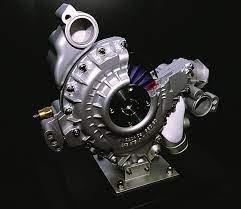
Purpose and types of auxiliary braking system
Content
One of the systems included in the braking control of the vehicle is the auxiliary braking system. It works independently of other braking systems and serves to maintain a constant speed on long slopes. The main task of the auxiliary braking system is to unload the service braking system in order to reduce its wear and overheating during prolonged braking. This system is used mainly in commercial vehicles.
The main purpose of the system
Gradually accelerating when driving on slopes, the car can pick up a sufficiently high speed, which may be unsafe for further movement. The driver is forced to constantly control the speed by using the service braking system. Such repeated braking cycles lead to rapid wear of the brake pads and tires, as well as an increase in the temperature of the braking mechanism.
As a result, the coefficient of friction of the linings on the brake drum or disc is reduced, which leads to a decrease in the efficiency of the entire brake mechanism. Therefore, the braking distance of the car increases.
An auxiliary braking system is used to ensure long-term downhill travel at a low fixed speed and without overheating of the brakes. It cannot reduce the vehicle speed to zero. This is done by the service braking system, which in the “cold” state is ready to perform its task with the greatest efficiency at the right time.
Types and device of the auxiliary braking system
The auxiliary braking system can be presented in the form of the following options:
- engine or mountain brake;
- hydraulic retarder;
- electric retarder.
Engine brake
The engine brake (aka “mountain”) is a special air damper installed in the exhaust system of a car engine. It also includes additional mechanisms for limiting the fuel supply and turning the damper, causing additional resistance.
When braking, the driver moves the throttle to the closed position and the high-pressure fuel pump to the position of limited fuel supply to the engine. Bleeding of air from the cylinders through the exhaust system becomes impossible. The engine shuts off, but the crankshaft continues to rotate.
As the air is pushed out through the exhaust ports, the piston experiences resistance, which slows down the rotation of the crankshaft. Thus, the braking torque is transmitted to the transmission and further to the driving wheels of the vehicle.
Hydraulic retarder
The hydraulic retarder device is:
- the body;
- two paddle wheels.
The impellers are installed in a separate housing opposite each other at a short distance. They are not rigidly connected with each other. One wheel, connected to the brake body, is stationary. The second is installed on the transmission shaft (for example, a cardan shaft) and rotates with it. The body is filled with oil to resist the rotation of the shaft. The principle of operation of this device resembles a fluid coupling, only here the torque is not transmitted, but, on the contrary, dissipates, turning into heat.
If a hydraulic retarder is installed in front of the transmission, it can provide several stages of braking intensity. The lower the gear, the correspondingly more effective the braking.
Electric retarder
The electric retarder functions in a similar way, which consists of:
- rotor;
- stator windings.
This type of retarder on a vehicle with a manual transmission is located in a separate housing. The retarder rotor is connected to the cardan shaft or to any other transmission shaft, and the stationary stator windings are fixed in the housing.
As a result of applying voltage to the stator windings, a magnetic force field appears, which prevents the free rotation of the rotor. The resulting braking torque, like a hydraulic retarder, is supplied to the driving wheels of the vehicle through the transmission.
On trailers and semi-trailers, if necessary, retarder brakes of both electric and hydraulic type can also be installed. In this case, one of the axles must be made with semiaxes, between which the retarder will be installed.
To sum up
The auxiliary braking system is necessary to maintain a constant speed when driving on long slopes. This reduces the load on the brakes, increasing their service life.
